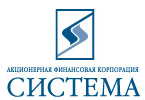|
|
|
 |
Virtual Tours round the Russian Museum The Rossi Wing |
     |
The Russian Museum
»
The Rossi Wing
»
Room 7
Room 7Ceramics, Bone Carving, Patterned Weaving and Printed Cloth of the 19th – Early 20th Centuries Room VII shows ceramics, bone carving, patterned weaving and printed cloth from the nineteenth and early twentieth centuries. The pottery exhibited in the room demonstrates all the main ways and manners of decorating folk ceramics and the diversity of its forms and sizes, depending on their specific function. Among them are large vessels and baklaga flasks for water, korchaga earthenware pots for beer, gorlach clay pots for grain storage, jugs and crocks for milk or kvas, narrow necked kubyshka for vegetable oil and hanging washing-vessels. The visual simplicity and modesty of folk ceramics combine with its proportionate and balanced plasticity of forms. Earthenware crockery was also decorated with ornamentation applied to the moist surface with a pointed stick or stamps. In the last third of the nineteenth century, the town of Skopin in Ryazan Province was singled out among numerous local centres of pottery. Alongside ordinary crockery, they manufactured figured vessels and sculpture-vessels. Among them there were disc-shaped kvas jugs and kumgan narrow-necked jugs, vessels in the shape of a bear, bogatyr Polkan, fish, lions, double-headed eagles, hens, parrots and even monkeys, as well as the “fish-hawk” bird of prey (skopa in Russian) which, according to legend, gave the town its name. In the nineteenth century, the style and nature of bone carving by the celebrated masters of Kholmogory tradechanged. The shapes of caskets and chests simplified. Their rectangular forms corresponded to the austerity of a new style – Classicism. Patterned weaving is the most complicated and laborious way of decorating fabrics. It was widely developed in many Russian provinces. Although there was a loom (a device with stretched longitudinal row of threads – warp intertwined crosswise with weft threads) in almost every peasant hut, not every spinner could make cloth with a complex pattern, weaving decorated blouses, skirts, pinafores, towels, tablecloths, sashes and valances. The most popular techniques of weaving were pestryad, branina, remiznoye and zakladnoye weaving. A ceremonial and austere combination of red and white is characteristic of many fabrics from north Russia – Archangelsk, Olonets, Vologda and Kostroma Provinces. In the nineteenth and twentieth centuries, the “blue” cube printed pattern was the most popular with the peasantry. The board was covered in a special composition – vapa – and used to print a pattern onto homespun linen canvas. The canvas was then plunged into a tank with paint, where it took a dark blue colour, while the design “reserved” for the vapa stood out in a delicate white pattern. Cube printing was widely spread in everyday peasant life. It was used to sew shirts, trousers, aprons, sarafans, bedspreads and tablecloths. Festive tables were set with tablecloths only on important holidays – celebrating weddings, the spring sowing or autumn harvesting. Their ornamentation was traditional and retained the obligatory rosette circles and birds as a personification of light and the sun. |
The Project “The Russian Museum: the Virtual Branch” |